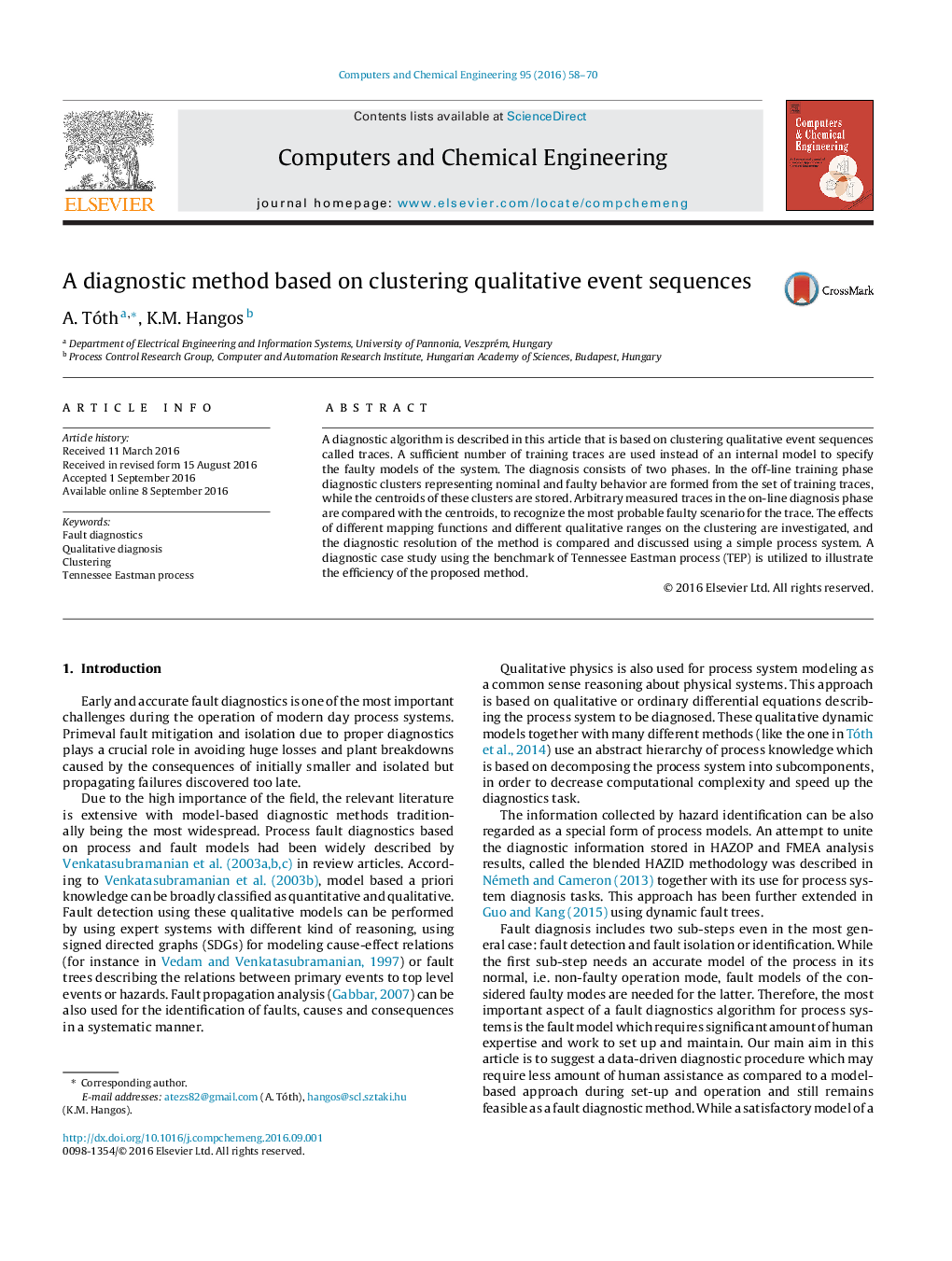| Article ID | Journal | Published Year | Pages | File Type |
|---|---|---|---|---|
| 6469281 | Computers & Chemical Engineering | 2016 | 13 Pages |
â¢A model-free diagnostic algorithm is proposed based on clustering qualitative event sequences. The diagnosis consists of two consequent phases, an off-line training and an on-line diagnosis phase.â¢In the off-line training phase diagnostic clusters representing faulty behaviour are formed from the set of training traces.â¢Arbitrary measured traces in the on-line diagnosis phase are compared with the clusters to recognize the most probable fault.â¢The effects of different mapping functions and different qualitative ranges on the clustering are investigated in a simple case study.â¢The general fault diagnostic capabilities are investigated on a composite case study (the Tennessee-Eastman Process System).
A diagnostic algorithm is described in this article that is based on clustering qualitative event sequences called traces. A sufficient number of training traces are used instead of an internal model to specify the faulty models of the system. The diagnosis consists of two phases. In the off-line training phase diagnostic clusters representing nominal and faulty behavior are formed from the set of training traces, while the centroids of these clusters are stored. Arbitrary measured traces in the on-line diagnosis phase are compared with the centroids, to recognize the most probable faulty scenario for the trace. The effects of different mapping functions and different qualitative ranges on the clustering are investigated, and the diagnostic resolution of the method is compared and discussed using a simple process system. A diagnostic case study using the benchmark of Tennessee Eastman process (TEP) is utilized to illustrate the efficiency of the proposed method.
